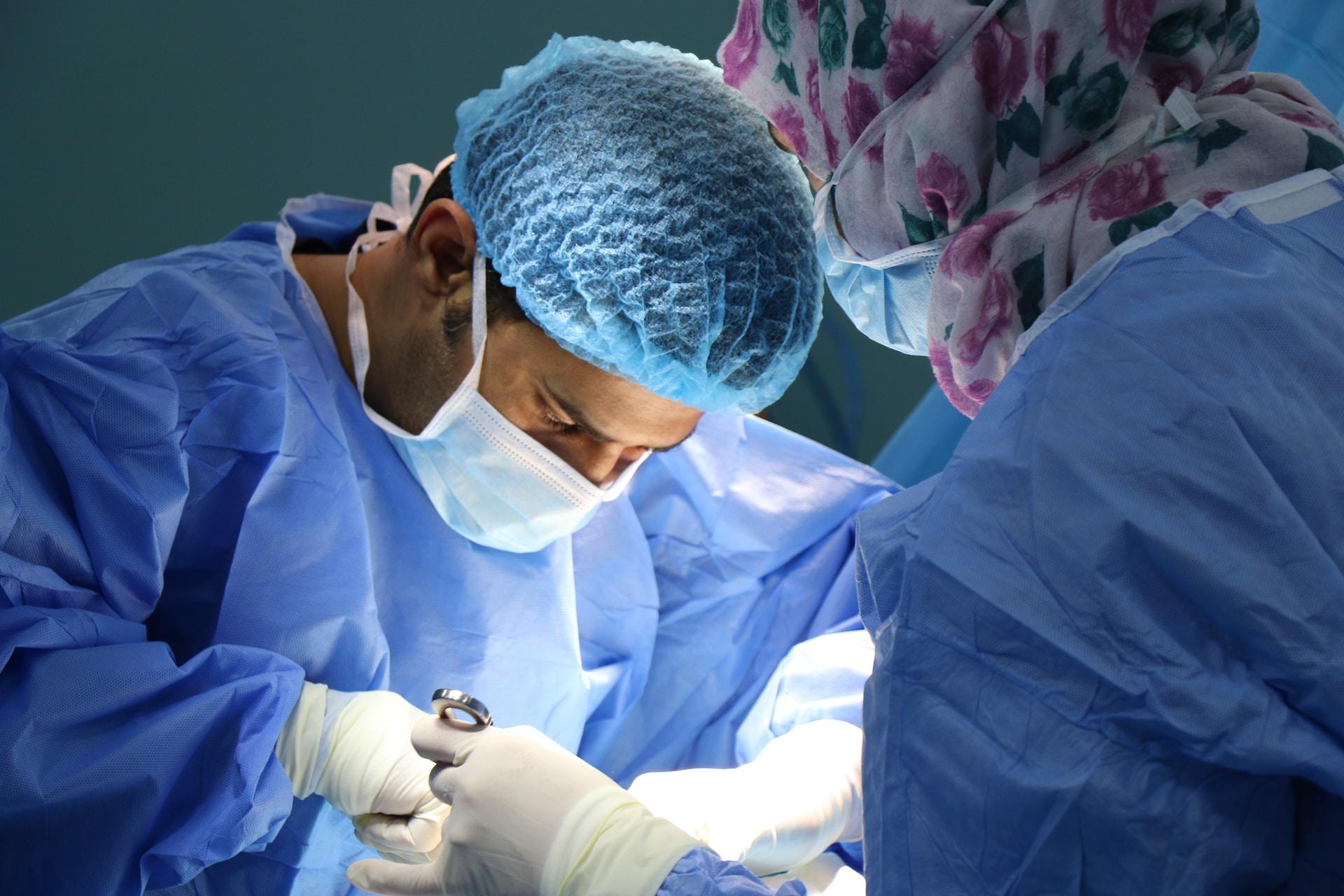Recovering from surgery can be a grueling and painful procedure as the body slowly heals. When the surgery in question has been performed on a joint, such as a knee or a hip, the process can feel even longer as the healing tissues are aggravated by constant movement.
Alongside pain relief, physical therapy is the most commonly prescribed treatment for patients recovering from knee or hip surgery. This therapy restores strength and extension to the joint, ensuring that, post-surgery, patients can resume a mobile, healthy lifestyle.
The benefits of physical therapy have long since been proven; however, it is a costly and time-consuming treatment that can increase the costs of already expensive surgeries. This is where ROMTech® comes in. ROM Technologies™, or ROMTech for short, is an innovative solution to physical therapy that allows patients to manage their recovery from the comfort of their home while saving money.
What Is ROMTech?
ROMTech first launched its innovative rehabilitation equipment in 2014 and has been helping patients manage their treatment and recovery ever since. Their equipment, such as PortableConnect®, is centered on optimizing patient care. It reduces people’s pain while maximizing their range of motion in their newly constructed joints.
Surgeons across the United States have been prescribing ROMTech’s PortableConnect to their patients after knee or hip surgery. Furthermore, most insurance companies now cover ROM Technologies solutions. The PortableConnect comprises three components that work seamlessly together to provide highly effective physical therapy from the comfort and privacy of a patient’s home.
The first component is the adaptive pedals. These pedals automatically adjust to the patient’s current range of motion, allowing for comfortable and gentle movement that strengthens the joint. There are four settings: passive, active-assisted, active, and resistance. As patients regain strength and mobility, the pedals adapt and apply a new setting.
The pedals work in tandem with AccuAngle, a medical wearable that patients attach to the outer side of their knee. Using Bluetooth, this device tracks the extension and flexion of the joint during each session and reports this information to the patient app. This allows people to actively monitor their recovery as AccuAngle reports their range of movement to the exact angle.
In addition to this, patients can stay in contact with their physicians throughout the entirety of their recovery via the PortableConnect app. Doctors can prescribe a treatment plan that is personalized to the needs of each patient and subsequently monitor their progress. If necessary, doctors can adjust the physical therapy program in accordance with how well a patient is recovering.
Knee Surgeries
Knee Replacement Surgery
As people age, the hard cartilage that allows the thigh and shin bones to move comfortably against one another is gradually worn away. Arthritis worsens this process because it causes the hard cartilage to grow thin, making joint movement painful as the bones start to rub against one another without a protective barrier. This can cause the bones themselves to begin to deteriorate.
This is an unavoidable aspect of aging that many active adults experience. If left untreated, this degrading of the cartilage, and eventually the bone, can cause severe pain and hinder mobility. To treat this, surgeons developed a knee replacement surgery. It was first performed in 1968 and has become one of the most successful procedures available to patients through various technological and medicinal developments.
Before prescribing surgery, patients are offered alternative, less invasive treatments like knee supports, alternative physical activities, anti-inflammatory medications, and steroid injections. While these treatments can effectively manage the pain some people experience and allow them to return to their preferred lifestyle, for most people, the deterioration of the cartilage and bone is too severe and can only be treated via surgery.
The surgery is a relatively simple procedure that rarely requires patients to be admitted for longer than a day. Before the surgery, an orthopedic surgeon will assess the severity of the knee’s deterioration and consider one of four different knee replacement surgeries to conduct. The strength of the patient’s muscles and their overall health is also taken into consideration before surgery is prescribed.
The most common and successful form of surgery is a total knee replacement (TKR). While this is a more invasive procedure, it decreases the likelihood of the patient needing additional knee surgery later in life. A TKR involves removing the worn ends of the bone and covering it with metal. The undersurface of the kneecap may also need to be replaced with a plastic dome.
Some patients may qualify for a partial knee replacement. This can be prescribed when only part of the joint, typically the inner side, has deteriorated. As it involves only one side of the knee, this surgery is less invasive, allowing quicker recovery times and a lower risk of infection. However, further surgery will likely be required as the patient ages.
If only the patella has been affected by arthritis, then surgeons can perform a kneecap replacement, also known as a patellofemoral arthroplasty. Both the undersurface of the kneecap and the trochlea can be covered in plastic, protecting the bone from further wear. This surgery is not prescribed as frequently because, while it is less invasive, the recovery is less predictable than for other knee surgeries.
If the deterioration of the bone is severe or the bone has been fractured, an orthopedic surgeon may choose to perform a complex knee replacement. The synthetic components used in this procedure have longer stems, allowing them to be more securely attached to the bone. Surgeons can also construct a hinge comprising interlocking pieces to aid movement.
Ligament and Tendon Knee Surgery
Through regular, intense exercise, and traumatic injuries, the tendons and ligaments that hold the kneecap in place and facilitate fluid motion in the knee can be damaged. To restore healthy movement to the joint, patients can undergo one of several different surgeries.
If a patient has damaged their anterior cruciate ligament (ACL), they will need reconstructive surgery. This injury is common among athletes, especially football players. The ACL is a tough band of tissue that runs diagonally across the knee and attaches the thigh bone to the shin bone. When it is torn, the knee becomes unstable and incredibly painful, significantly reducing the injured person’s mobility.
The surgery involves removing the damaged tissue and replacing it with a tendon graft from another area of the body, typically the hamstring. Most patients recover their full range of motion after surgery. Patients are advised to maintain a healthy lifestyle through low-impact sports such as swimming and cycling as they recover from the operation.
Another common knee surgery involves replacing the ligaments that secure the patella. Both the quadriceps and the patellar ligaments can be damaged through traumatic injuries and must undergo the same replacement process as the ACL. Without these healthy ligaments, the knee is more vulnerable to damage. More invasive surgery will likely be required if the ligaments are not repaired.
Each of these surgeries has high recovery rates that allow people to return to a healthy, pain-free lifestyle after they have completed their post-surgery treatment plan.
Traditional Recovery Methods and Expectations
Recovery relies on several variables that will dictate how long the process takes and how much range of motion patients regain. These variables include the patient’s age, weight, general health, and strength and condition of their other joints.
The expected recovery time can also be altered by the surgery’s success. Some patients are scheduled to have a partial knee replacement but require a more intensive repair. This, however, is very rare.
To promote blood flow and increase the chances of regaining a full range of motion, patients are encouraged to start moving soon after their surgery. Patients will be guided around the ward by a nurse using either crutches or a walking frame as little as 12 hours after the operation.
Early movement can also prevent stiffness and the development of scar tissue around the joint.
After patients have been discharged from the hospital, they are typically prescribed pain medication and sessions with a qualified physiotherapist. A physiotherapist will visit them beforehand to advise on how to safely move around at home, such as climb stairs and shower without damaging the newly formed joint.
For the first three weeks, patients are advised to regularly but slowly move around their home using a walking aid. As they regain strength in their thigh muscle, patients can exchange two crutches for one before progressing to a walking stick. Patients can start to walk outside after three weeks, as long as they wear supportive footwear and stick to flat, paved areas.
Typically, after six weeks, most people feel confident enough to walk without aids and to start driving again. These time frames are dependent on the specific type of knee surgery and doctor recommendations. For a TKR, patients can expect a longer recovery, while a partial replacement will see a far quicker return to normal mobility.
Throughout this timeline, patients are expected to attend physical therapy sessions and complete various exercises independently at home. These sessions all serve to strengthen the joint and the surrounding muscles. The prescribed activities can range from 20 minutes of walking to several short sets of leg lifts and ankle pumps.
Without this continual exercise, the knee can become weak and stiff, defeating the original surgery’s purpose. Aftercare is as crucial as surgery when restoring the knee’s health.
Recovery with ROM Technologies Solutions
The results of knee surgery can be significantly improved with ROMTech’s latest piece of equipment, PortableConnect. Patients will follow a similar procedure to that outlined above after surgery; they will be prescribed gentle exercise and various pain management medications. However, instead of needing to attend physiotherapy or complete exercises that, if done incorrectly, could cause further pain and damage to the joint, they will be prescribed a treatment plan using PortableConnect. This plan will include 3–5 short daily sessions to strengthen the knee joint through low-impact, the consistent movement gradually.
Patients prescribed a PortableConnect see significantly quicker results than those who follow the traditional recovery methods. Patients can expect to regain 112 degrees of motion in their knee within two weeks. In contrast, patients without access to a PortableConnect will only have 99 degrees of activity in the same time frame.
Recovery can be a painful and tiring process in which many patients lose the energy to complete their prescribed exercises and subsequently rely on pain medication. With PortableConnect, 80% of patients ranked lower on the pain scale and did not have to rely on narcotics for pain management.
In addition to this, because patients can perform their physical therapy with PortableConnect from the comfort of their home, they are more likely to complete their therapy program in its entirety. This restores more motion and strength to the knee. It also saves patients a considerable amount of money on costly physiotherapy sessions and provides them with a simple, stress-free alternative.
Through gentle, repetitive motion and regular communication with their physician via the PortableConnect app, the recovery process is simplified while being significantly improved. For patients eager for a swift and painless recovery, PortableConnect presents the best option currently available on the market.
Hip Surgery

There are various reasons why an individual may require hip surgery, the most common being osteoarthritis in patients over 60. Other grounds for prescribing hip surgery can include rheumatoid arthritis, septic arthritis, a fracture, or a disorder that affects bone growth and development.
Hip Replacement Surgery
Similarly to the knee joint, as a person ages or experiences osteoarthritis, the cartilage and the bones in their hip can begin to deteriorate and rub against one another, causing severe pain and reducing mobility.
Hip replacement is a major surgery that is offered to patients only after several other treatment methods have failed. Alternative treatments can include physiotherapy, low-impact exercise, swimming or cycling, and steroid injections into the hip joint. If these methods do not improve a patient’s pain or mobility and their quality of life is affected, their physician will prescribe a hip replacement.
Unlike the knee, which is a hinge joint, the hip is a ball-and-socket joint. The femoral head is the ball of the hip joint that rests inside the acetabulum, the pelvis socket. Hip replacement surgery involves removing and replacing the damaged bone with two synthetic components that mimic the size and shape of the femoral head and the acetabulum.
The stem attached to the ball that will replace the femoral head is always made out of metal and is drilled into the top of the femur. The materials used to make the replacement ball and socket will depend on the age and mobility of the patient. For older patients, surgeons will implant a metal replacement femoral head and a plastic acetabulum.
Typically, younger patients will receive a ceramic femoral head and either a ceramic or a plastic acetabulum. This material is more durable and, as such, will last far longer before it needs to be replaced. Surgeons will also give younger patients an implant with a larger diameter where possible because this allows for a greater range of motion post-surgery.
Partial hip replacements can be performed when only the femoral head has started to deteriorate or if the ball or femur has been fractured due to a traumatic injury. This surgery solely replaces the femoral head with either a metal or a ceramic component.
Some patients may also qualify for hip resurfacing, which preserves more of the original bone. However, this procedure is effective only for younger people with strong bones. In recent years, it has become less popular, with more hospitals favoring partial or full hip replacements.
While it is considered to be a major surgery, a hip replacement typically takes only 1 to 2 hours to complete. Patients remain in the hospital for 3-5 days after surgery to allow monitoring of their pain and how the incision is healing before being allowed to return home.
Traditional Recovery Methods and Expectations
Medical professionals are eager to start the recovery process as soon as possible after surgery. As such, on the same day as the operation, patients will be encouraged to get out of bed and walk around the ward with crutches or a frame. This encourages healthy blood flow around the incision and helps minimize the development of scar tissue.
Patients will have a drain placed in their hip to remove any excess fluid from the area. Additionally, patients will be visited by a physical therapist to assess their current range of motion and how best to restore it to a healthy capacity. A physical therapist will provide information about safely moving on their crutches and completing various activities, such as showering and changing.
After a patient has been deemed fit for discharge, their primary physician will prescribe a course of pain medication and enroll them into a physical therapy program. Restrengthening the hip joint through regular exercise and physiotherapy is crucial. Without these measures, the joint may dislocate, causing extreme discomfort and the necessity for additional medical intervention.
Patients are advised to recline and sleep on their back following surgery with a pillow placed between their legs. This helps to keep the legs stable during the initial recovery process. Using walking aids when awake and upright is also recommended as patients gradually place more weight on their newly constructed joints and adjust to increased activity.
As with knee replacements, patients are advised to engage in low-intensity sports in addition to completing their prescribed physiotherapy. This includes walking on flat, smooth surfaces and swimming once the incision site has healed. Cycling is also recommended; however, getting on and off the bike at first may be difficult.
After surgery, it is important to avoid activities involving extreme hip movements, such as bending or twisting the hip. Sports such as skiing and running on hard surfaces are not recommended. Other activities, including golf and tennis, can be enjoyed after patients have completed their physical therapy course.
Recovery with ROMTech Solutions
With PortableConnect, the latest device produced by ROM Technologies to aid joint rehabilitation, patients can quickly regain their full range of motion from the comfort of their homes. This device advances the healing process while allowing patients to participate in their recovery actively.
Depending on the patient, their surgeon will prescribe 3–5 sessions on the PortableConnect® per day. These sessions reintroduce movement into the joint without unnecessarily strain the healing tissues. As such, patients experience significantly less discomfort and are not as likely to rely on pain medication throughout their recovery.
PortableConnect provides an accessible alternative to physiotherapy. While the benefits of physiotherapy are well established, these sessions are costly and require the patient to leave their home. Some patients don’t have a caregiver to transport them between locations or the funds necessary to pay. PortableConnect can be used in the comfort of the patient’s home and is covered by most insurance providers.
When using PortableConnect, most patients return to or exceed their pre-surgery range of motion within two weeks. This dramatically improves their quality of life and allows them to return to the activities that mean the most to them.
Furthermore, patients who restrengthen their hip joint using PortableConnect are less likely to be readmitted to the hospital because the risks of dislocating the hip are significantly lower.
Final Thoughts
The main goal of recovery is to minimize pain while maximizing the range of motion in the joint and returning a patient to full mobility. With PortableConnect, patients can achieve these goals twice as quickly as with physical therapy alone. With its ability to prioritize gentle movement and adjust to the needs of each patient, there is no better way to recover than with ROMTech’s PortableConnect.












